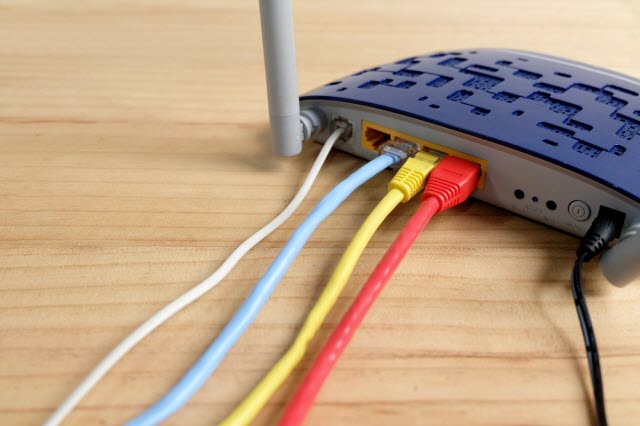Earlier this year I was forced to buy a new router for my home. As it is, with so many devices to connect, the old TP Link no longer provided me with what I needed. Two computers, three cell phones, video game console, TV, Chromecast, stereo, smart lights, thermostat, smartwatch... There are 13 computers permanently connected in 50 square meters, regardless of when guests come and the first thing they ask for is the key to the Wi-Fi.
After several sittings to analyze the characteristics of many devices, I decided on the OnHub router from Google, since it is a computer built for the Internet of Things and besides supporting more than 30 connected devices simultaneously, is considered one of the safer products on the market.
In fact, the router is the first device that you must consider when thinking about securing your connections — since it not only controls the perimeter of your network, but all your traffic and information passes through it. Nowadays, most of these devices have a wide variety of functions, tools and configurations, which not only increase their potential, but also increase the risk that they might become compromised. So, whatever model you have in your house, take a few minutes to analyze its operation and be sure to check these five key points in your configuration.
# 1 Change the password for your router
It seems untrue that in 2017 this advice is still the first on the list, but the truth is that many users still do not change the password of their computers when installing them at home. Without going any further, just over a month ago, an investigation by Hold Security found that an internal Equifax portal could easily be compromised by using default credentials.
These credentials are on almost every device and can be found easily by doing a search on the internet. So you should change both the router's username and the key and try to use strong and unique passwords.
# 2 Divide and triumph: separate devices
Most of the modern Internet Routers of Things allow you to create different networks for different purposes. A good practice is to take advantage of this function and create separate networks, so as to expose as little as possible when using the most sensitive devices.
In addition, many current routers also have firewalls that allow you to analyze the incoming and outgoing traffic of the device and determine which connections are allowed and which are not. From these features you can, for example, separate all sensitive devices such as surveillance cameras, storage devices, environmental controls (such as lights or thermostats), etc. from the rest of the devices such as computers or cellular. You can also choose which devices you want to share when you have guests at home and which ones remain isolated, or separate your children's game consoles and computers from the rest of the network.
This way, your most important computers will be protected in case of any unauthorized access or if a malware infestation occurs.
# 3 Disable services and features you do not use
Unless you know specifically what each functionality in your router is for, and you actually need those functionalities, disable all that are not in use. From a simple scanning technique you can determine which ports and services are open. These can be accessed from the outside and leave an open door for an attacker or a curious neighbor. In addition, many of these services may have vulnerabilities that an attacker can take advantage of to gain access to the network.
According to a recent ESET survey late last year, more than 20% of home routing devices have remote management services enabled on non-secure protocols such as Telnet or HTTP.
If you do not need to access your router from outside your home, it is better to disable remote administration: control the administration services over secure protocols such as SSH or HTTPS and disable any other functionality that you do not use.
This tip also applies to all devices that connect to the router. Turn off the camera, microphone, or other components that you do not use on all your devices to avoid exposing them. In fact, it is so common for many users to leave these services enabled or not properly configured, that the search engine Shodan has indexed more than nine thousand webcams and seven thousand routers with default credentials.
# 4 Audit your devices and connections
Do you know how many devices are connected to your network? Can you easily identify them? This is key when it comes to detecting intrusions or strange behavior.
Although it seems like a tedious and complicated activity, the reality is that many routers facilitate the identification of the connected equipment since, instead of using difficult-to-understand nomenclatures like the MAC addresses, they allow you to create personalized names for each device. In these cases, it is advisable to take a few minutes to identify the equipment and then be able to recognize them more easily.
It is not too important to do a count every so often and to check what equipment is in your network, such as the TV, the game console, security cameras, smart devices, etc. It is also worth noting that you can also check the configurations of these computers and ensure that there are no default options or updates pending installation.
# 5 Update the firmware of your devices
All hardware equipment has an operating system, which is known as firmware; and, like any other system, must be updated to correct potential bugs and vulnerabilities. In fact, finding vulnerabilities in router firmware and other hardware is much more common than it appears. Just a few months ago, a vulnerability reported on NetGear routers allowed it to steal access credentials and take control of the device.
The main difference between the firmware of most routers and the operating system of your computer or cell phone is that, in the latter, the updates are usually automatic. That is, they are downloaded and installed without requiring user interaction. In the case of network equipment, like most IoT devices, firmware updates are not automatic, but the user must download and install the new version.
While this can be a bit tedious for users without an abundance of technical skills, the truth is that it is not as difficult as it seems. Most devices have a graphical administration interface, in which you will surely find a section with information about the device. Once you find the model of your router and the firmware version installed, simply go to the provider's website and check if there is an updated version to install. Many devices already include the update function directly in your management console, which is very useful for reviewing and installing updates.
Now you know that it is worth investing a few minutes in the configuration of your router and the devices connected to your network. Do not be afraid to investigate the functionalities of your computer, disable the ones you do not use, configure the protection measures and be aware of the connected devices. Most of the current devices come with friendly graphical interfaces so that in a few minutes you are more protected.







